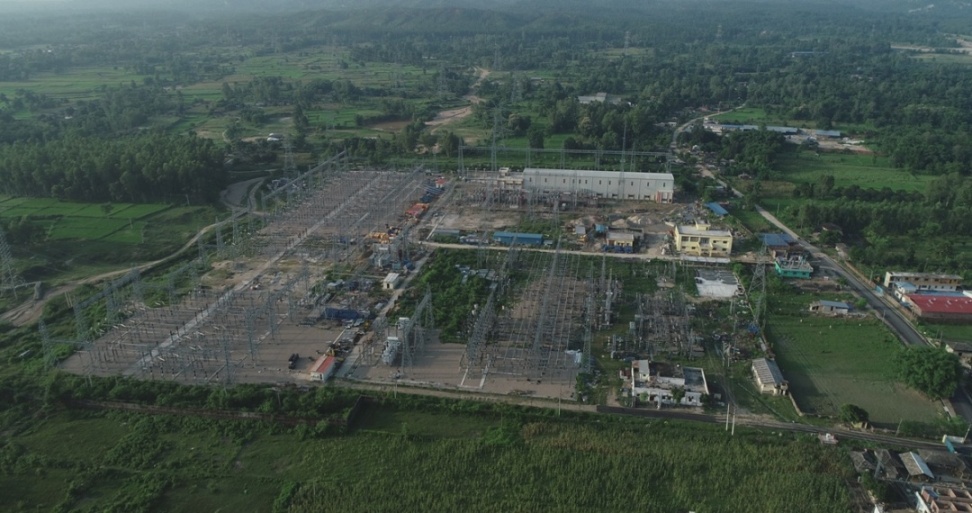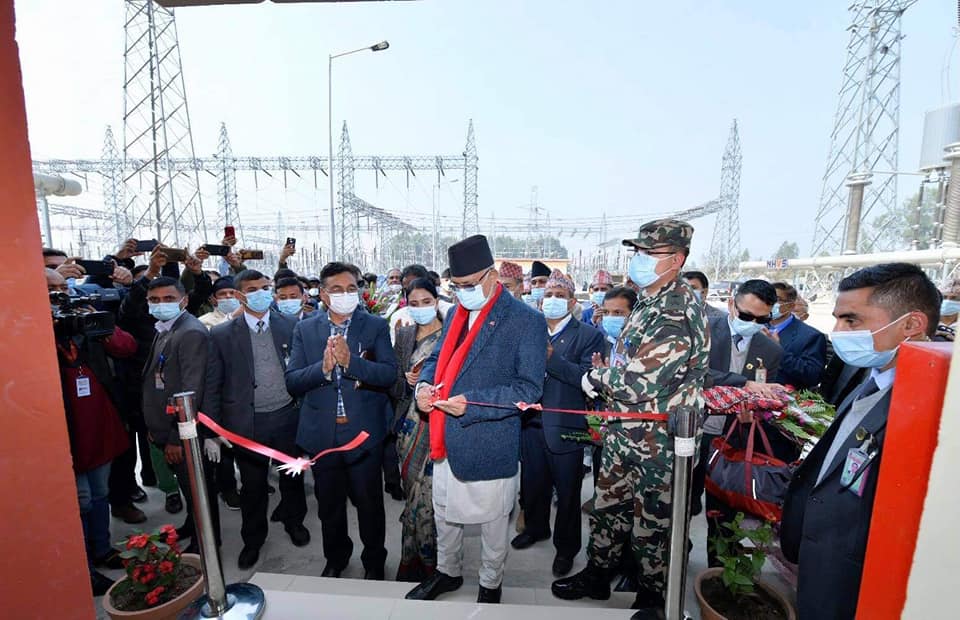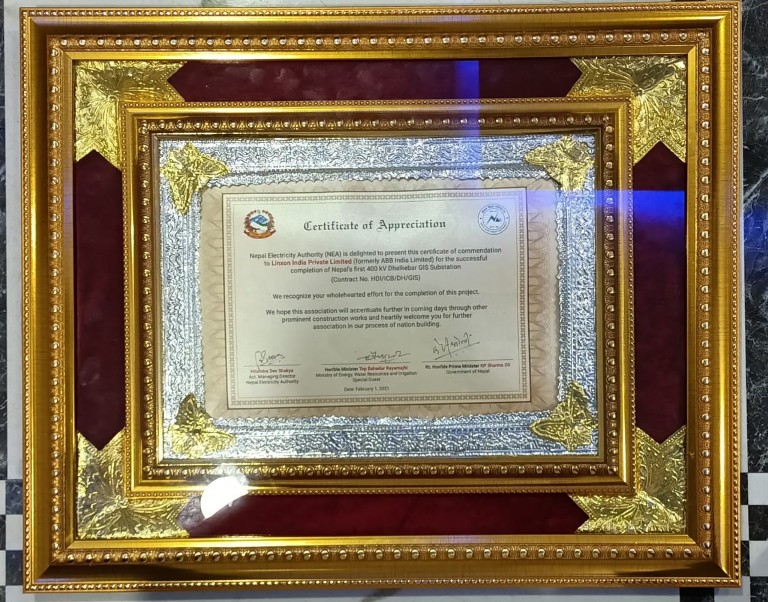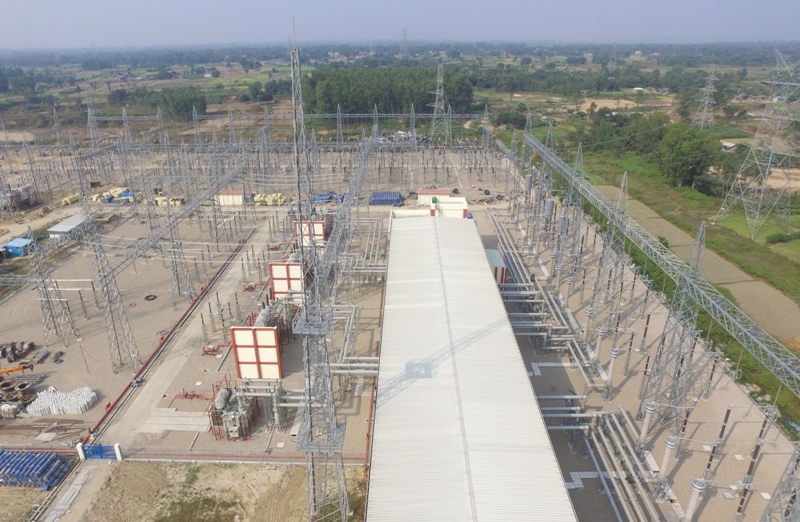In this case study, Arjun Singh, Project Manager, Linxon India, recalls the infrastructural and Covid-related challenges surmounted during the successful completion of Nepal’s first 400kV GIS substation located at Dhalkebar and commissioned by Linxon for Nepal Electricity Authority.
The prestigious contract was awarded to Linxon (at that time ABB) by Nepal Electricity Authority (NEA) in December 2017. Linxon’s scope was design, supply, installation, testing and commissioning of the high voltage equipment for fifteen 400kV bays, three 315 MVA transformers and one 80 MVAR reactor, including state-of-the-art control protection and automation system, as well as all associated civil works
In November, 2020, the Dhalkebar substation was energized to full capacity by Linxon. During the inauguration ceremony in February 2021, NEA presented a certificate of commendation to Linxon India Pvt Ltd for the successful completion. The certificate was awarded at the hands of Sh. K.P. Sharma Oli, Honorable Prime Minister of Nepal.
The substation is spread over 5.2 acres of land and is located 209 km from capital city Kathmandu.
 The 400kV Dhalkebar substation project was part of the 400kV Hetauda-Dhalkebar-Inaruwa substation expansion project, funded by the Government of Nepal. The 400kV Dhalkebar substation is connected to the Muzaffarpur (Bihar, India) substation via the 400kV Dhalkebar- Muzaffarpur cross border transmission line that will also be connected to Hetauda and Inaruwa via the 400kV Hetauda-Dhalkebar-Inaruwa transmission line.
The 400kV Dhalkebar substation project was part of the 400kV Hetauda-Dhalkebar-Inaruwa substation expansion project, funded by the Government of Nepal. The 400kV Dhalkebar substation is connected to the Muzaffarpur (Bihar, India) substation via the 400kV Dhalkebar- Muzaffarpur cross border transmission line that will also be connected to Hetauda and Inaruwa via the 400kV Hetauda-Dhalkebar-Inaruwa transmission line.
The Dhalkebar-Muzzaffarpur cross-border link became instrumental for exporting/importing the electricity between Nepal and India. Dhalkebar substation aims to serve as a backbone to transmission line system in the national grid of Nepal.

Dhalkebar being the major hub for power exchange between Nepal and India, the substation assists in the process of importing power and help to meet the increasing demand for electricity in Nepal along the country’s east-west axis. Furthermore, it is facilitating the export of electricity to India when Nepal’s capacity generates surplus of its local demand.
The Dhalkebar substation is an important milestone for Nepal’s hydropower sector. After the 456-MW Upper Tamakoshi-V hydro power generation project comes into operation, infrastructure is ready to export electricity that cannot be consumed at Nepal.
The Dhalkebar substation also provides energy to Nepal from the 900-MW Arun III hydropower project being developed by Indian public sector company SJVN Ltd (formerly, Satluj Jal Vidyut Nigam Ltd.)
Grit and resilience
“Together Linxon and NEA managed to overcome the impact of the COVID19 pandemic as well as a range of infrastructural challenges encountered whilst moving heavy weight consignments”, said Dinesh Chadha, Managing Director of Linxon India. “Nevertheless, these challenges helped us to build a strong collaborative working model between Linxon, our vendors and NEA, and allowed us to demonstrate our tremendous sense of grit and resilience”.
NEA congratulates Linxon

“Even during this adverse situation of recent COVID19 worldwide pandemic, Linxon has successfully completed Nepal first’s Dhalkebar 400kV GIS substation, which shall play strategically as a hub for power transmission network of Nepal and also upgrade Nepal-India inter-country power trade capacity up to 1,000-mw through the 400kV Dhalkebar-Muzaffarpur cross border transmission line. Nepal Electricity Authority (NEA) congratulates Linxon India Pvt Ltd (Formerly ABB India Limited) for the accomplishment and expresses our best wishes for their future endeavors”, said Dirghayu K Shrestha, Deputy Managing Director, Chief Transmission, Directorate Nepal Electricity Authority.
Also read: NHPC Signs MoU With PTC India For Power Sale From Nepal Projects
The challenges
The construction of the substation was affected by the floods of the Terai, the cold wave and the devastation of Covid-19 which spread all over the world.
Transformer transportation related challenges
Before moving out the three 315MVA ICTs and one 80MVAR reactor, the transporter conducted all the routes available towards Dhalkebar, Nepal from Vadodara in Gujarat, India. The toughest challenge was to reach Dhalkebar from the Indo-Nepal border. Finally the route chosen was from Sonbarsa to Dhalkebar, as all the bridges on main routes were found to be weak to carry this heavy-consignment.



